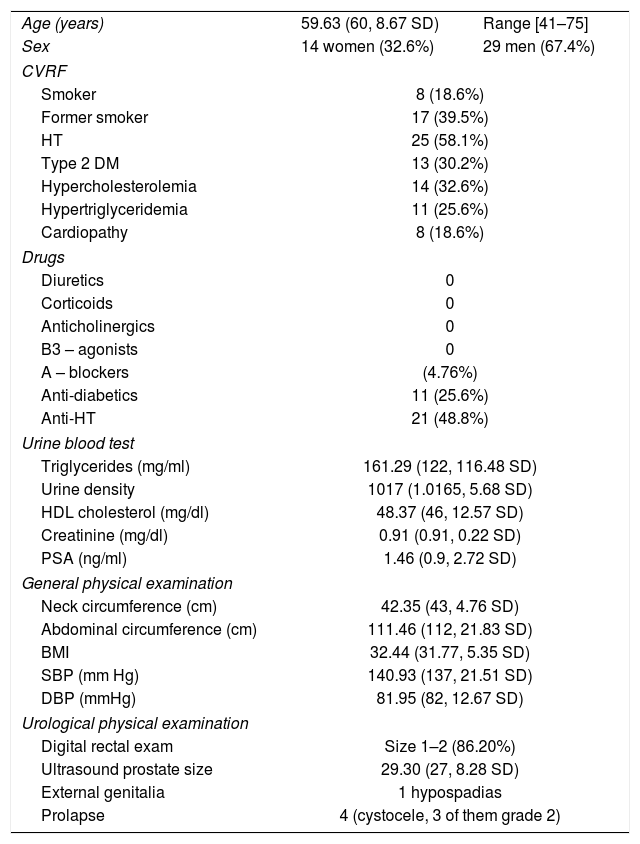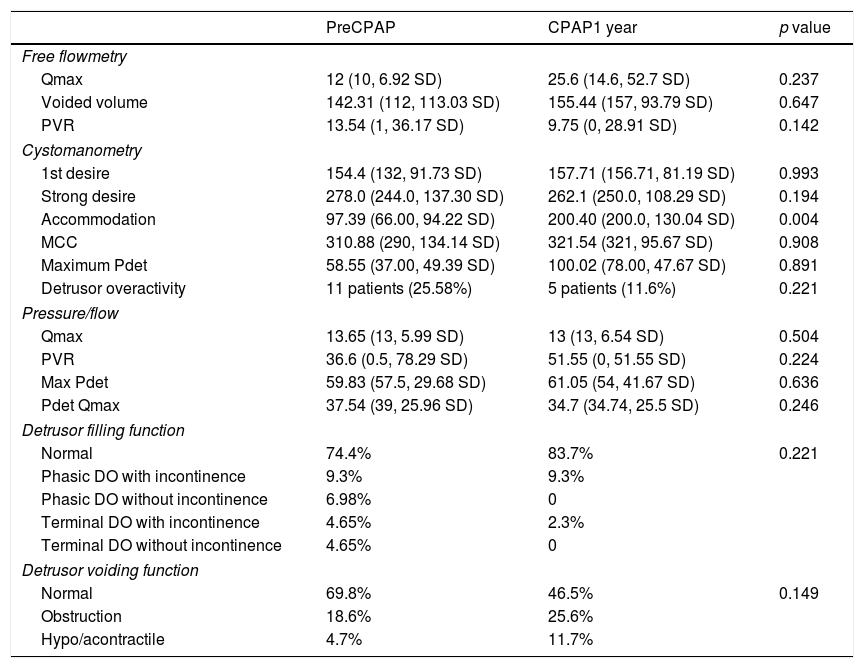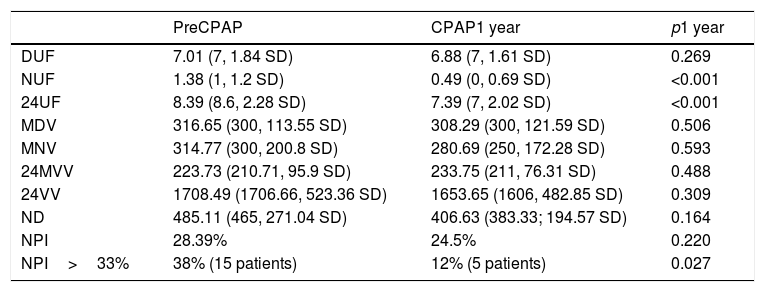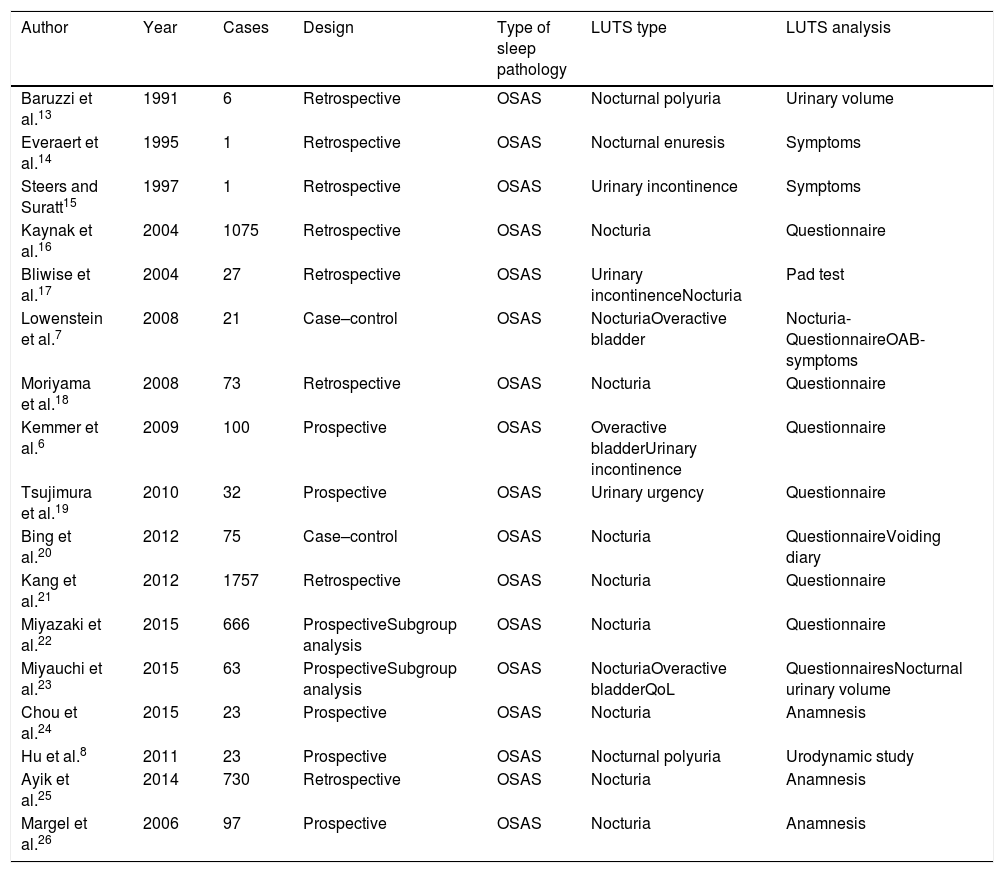To report the clinical evolution and the urodynamic behaviour of several lower tract urinary symptoms in patients with obstructive sleep apnea syndrome before and after the treatment with continuous positive airway pressure (CPAP) devices.
MethodsA prospective study was performed; patients with recent diagnosis of sleep apnea confirmed by nocturnal sleep polygraphy and absence of medical urological past history. In order to discard important lower urinary tract conditions, urological examinations were previously performed. Urinary symptoms were evaluated using the IPSS and OAB-V8 validated questionnaires, three-day Bladder Diary and invasive urodynamic examinations with a gap of one year before and one year after using the CPAP.
Results84 urodynamic studies were carried out in 43 patients. The IPSS score decreased by 3.58 points. The OAB-V8 score decreased by 2.87 points. Nocturia episodes decreased to one per night. The percentage of patients with nocturnal polyuria went down to 26%. The bladder compliance significantly increased (97.39 vs 200.40ml/cm H2O). The presence of detrusor overactivity decreased from 11 (before CPAP) to 5 patients (after CPAP).
ConclusionThe proper treatment with CPAP showed a statistical and clinical improvement of several LUTS with limited urodynamic modifications.
Demostrar el potencial impacto urodinámico que puede tener el uso adecuado de presión continua positiva de la vía aérea (CPAP) en pacientes con síndrome de apnea-hipopnea obstructiva del sueño y observar si la posible mejoría de los síntomas de tramo urinario inferior es debida a alguna modificación urodinámica.
MétodosEstudio prospectivo con pacientes recientemente diagnosticados de síndrome de apnea-hipopnea obstructiva del sueño mediante poligrafía del sueño. Se estudian desde el punto de vista urológico para descartar importantes patologías urológicas. Se utilizan cuestionarios validados IPSS y OAB-V8, diarios miccionales de 3 días y estudios urodinámicos invasivos, todos ellos antes de comenzar con CPAP y tras un año de su uso adecuado.
ResultadosSe llevan a cabo 84 estudios urodinámicos en 43 pacientes. La puntuación IPSS disminuye 3,58 puntos. La puntuación OAB-V8 disminuye 2,87 puntos. Los episodios de nicturia disminuyen más de uno por noche. El porcentaje de pacientes con poliuria nocturna disminuye un 26%. La acomodación vesical significativamente aumenta (97,39 vs. 200,40ml/cm H2O). Disminuye la presencia de detrusor hiperactivo en el estudio urodinámico de 11 (antes de CPAP) a 5 pacientes (tras CPAP).
ConclusiónTras el tratamiento apropiado con CPAP se observa una mejoría estadística y clínica de distintos síntomas de tramo urinario inferior con escasa repercusión urodinámica.











